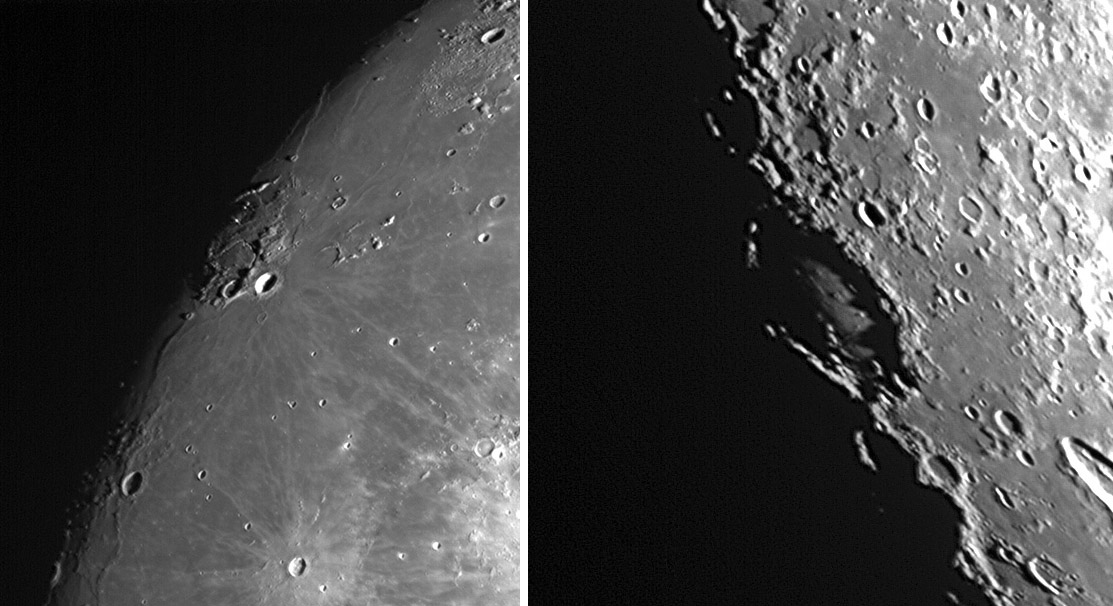September 8, 2014
Classic Views

image by Maurice Collins, New Zealand
Maurice's wonderful images with a 3.5" telescope mimic what I observed the same evening with a 6". With such instruments - the ETX is about the size of Mädler's refractor and my 6" matches the aperture of Schmidt's scope - we can get similar views to the best lunar mappers in history. It is remarkable that such good views of endless formations can be achieved routinely with small telescopes. The left view reveals the roughness and elevation of the Aristarchus Plateau, with the volcanic mountain that is the source of Schröter's Valley casting a squat triangular shadow. The Prinz and Aristarchus rilles are not perceptible, and they were only hinted at in the 6" at high power. At top right are the two massive volcanic domes made of more silica-rich lavas than mare basalts. And at bottom left is another variety of lunar lavas, the Marius Hills has steeper and rougher textured cones than normal volcanic domes and are either made of more viscous lavas, but not as much as at the Gruithuisen Domes, or ones that erupted more slowly so they build up hills rather than smoothly flowing away. The right image shows sunrise on Schickard, whose floor is not as featureless as it appears later in the lunar morning. And at bottom right is the multi-cratered Schiller, the product of low angle simultaneous impact of 3 or 4 projectiles. Not a bad haul for an small instrument - did you notice all of these features?
Chuck Wood
Technical Details
Sept 5, 2014. ETX-90 @ f/13.8 + ASI120MC camera.
Related Links
21st Century Atlas charts 24 & 28.
Yesterday's LPOD: Helen's Husband
Tomorrow's LPOD: Noel Hinners
COMMENTS?
Register, Log in, and join in the comments.



